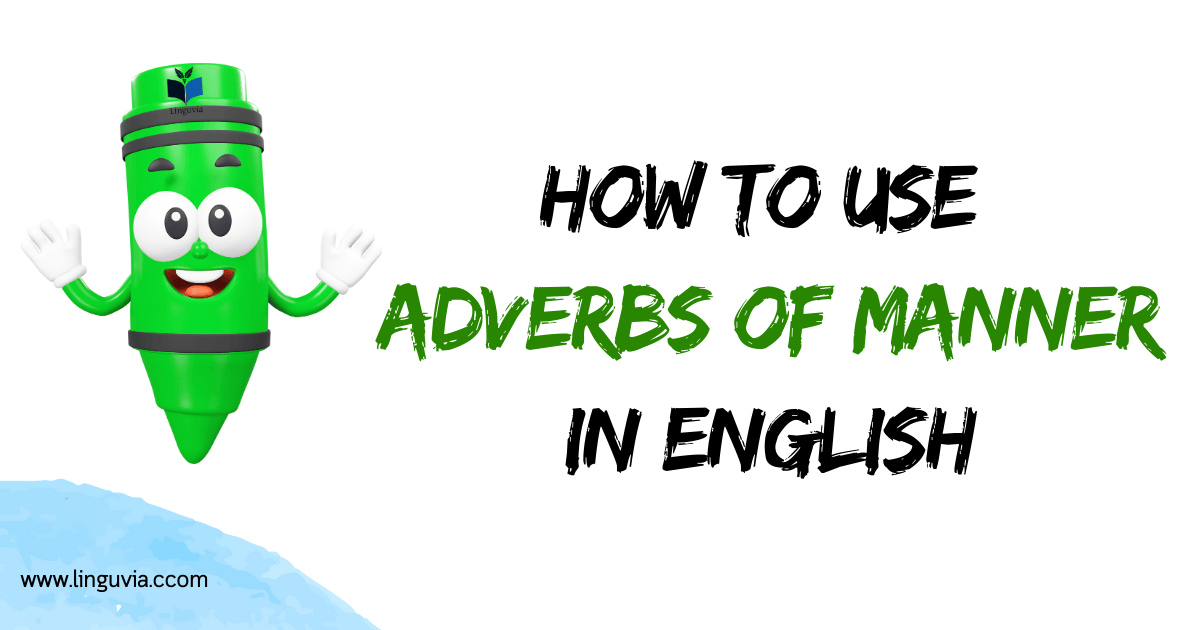When we talk about actions, it’s important to explain how they are done. Adverbs of manner help us describe the way something happens, making our sentences clearer and more specific.
What Are Adverbs of Manner?
These specialized adverbs describe the way in which actions are performed, adding essential detail and nuance to our sentences.
Adverbs of manner tell us HOW something happens or is done. They provide information about the way someone performs an action, adding richness and precision to our descriptions. These adverbs can modify:
- Verbs (most commonly)
- Adjectives
- Other adverbs
- Entire clauses
Formation: Creating Adverbs of Manner
Understanding how these adverbs are formed helps us recognize and use them correctly.
Most adverbs of manner are formed by adding "-ly" to adjectives:
- slow → slowly
- quiet → quietly
- careful → carefully
- beautiful → beautifully
However, some adverbs of manner have the same form as their adjective counterparts:
- fast → fast
- hard → hard
- late → late
And some are completely irregular:
- good → well
- little → little
Position in Sentences
The placement of adverbs of manner affects emphasis and sometimes meaning.
Adverbs of manner can appear in several positions within a sentence:
Adverb Positions
-
After the verb:
She speaks fluently.
They danced gracefully. -
After the object:
She held the baby tenderly.
He drives his car carefully. -
At the beginning of a sentence (less common, used for emphasis):
Carefully, she removed the precious artifact.
Quietly, the children entered the room. -
Between subject and verb (uncommon except in certain formal contexts):
The children silently watched the movie.
She gracefully accepted the award.
Degrees of Comparison
Like adjectives, adverbs of manner can show different degrees of intensity.
Adverbs of manner have comparative and superlative forms:
For most one-syllable adverbs and some two-syllable adverbs:
- fast, faster, fastest
- hard, harder, hardest
For most adverbs ending in "-ly":
- carefully, more carefully, most carefully
- slowly, more slowly, most slowly
Irregular forms:
- well, better, best
- badly, worse, worst
Common Examples in Context
These everyday examples show how adverbs of manner bring actions to life.
- The turtle moves slowly across the sand.
- He whispered softly in her ear.
- She plays the violin beautifully.
- The children laughed happily as they played.
- He skillfully repaired the broken watch.
Why Adverbs of Manner Matter
These adverbs serve specific communication purposes that help us express ourselves clearly.
Adverbs of manner are crucial because they:
Key Functions
-
Add precision to actions
He didn't just run; he ran quickly/slowly/awkwardly. -
Create vivid imagery
The ballerina moved gracefully across the stage. -
Convey emotion and attitude
He spoke angrily about the situation.
She smiled sadly as she waved goodbye. -
Distinguish between similar actions
He cleaned the house thoroughly. vs. He cleaned the house hastily.
Combinations with Other Words
Adverbs of manner often work alongside other language elements to refine meaning.
Adverbs of manner can be:
-
Intensified with very, too, quite, extremely:
She dances very gracefully.
He spoke too quietly for everyone to hear. -
Combined with other adverb types:
Yesterday, she sang beautifully. (Time + Manner)
They performed extremely well here. (Degree + Manner + Place)
Adverbs of Manner in Different Contexts
These adverbs play specific roles in various types of communication.
| Context | Example | Effect |
|---|---|---|
| Narrative writing | The detective cautiously opened the door. | Creates suspense and visualization |
| Instructions | Stir the mixture gently. | Ensures proper technique |
| Formal speech | The politician spoke eloquently. | Conveys professionalism |
| Casual conversation | He just casually mentioned his promotion. | Communicates attitude |
| Performance evaluation | She completes tasks efficiently. | Provides specific feedback |
Common Mistakes to Avoid
Being aware of these potential errors will improve your use of manner adverbs.
Common Errors
-
Confusing adjectives and adverbs:
Incorrect: She sings good.
Correct: She sings well. -
Redundancy:
Repetitive: She whispered quietly.
Better: She whispered. (Whispering is already quiet) -
Overuse:
Cluttered: He quickly and nervously and excitedly opened the gift.
Better: He excitedly opened the gift. -
Misplacement:
Unclear: She nearly drove the car perfectly.
Clear: She drove the car nearly perfectly.
Adverbs of Manner vs. Adverbial Phrases
Sometimes a single word isn't enough to convey how an action occurs.
When a single adverb isn't sufficient, we can use adverbial phrases of manner:
- She entered the room with great caution.
- The children played in a carefree manner.
- He completed the task as quickly as possible.
- They performed like professionals.
When describing how actions unfold, adverbs of manner are indispensable tools that add depth and clarity to our expression. Whether in speech or writing, using them effectively makes communication more engaging and precise.


